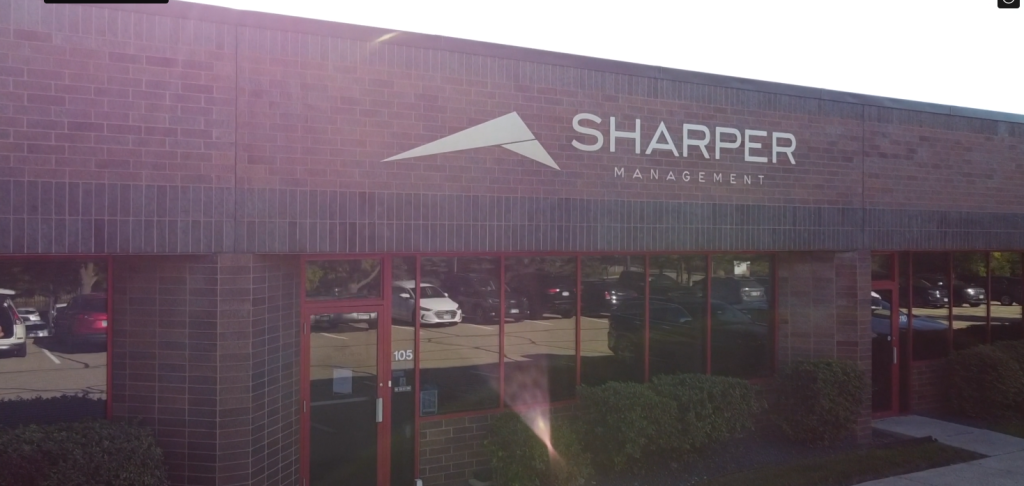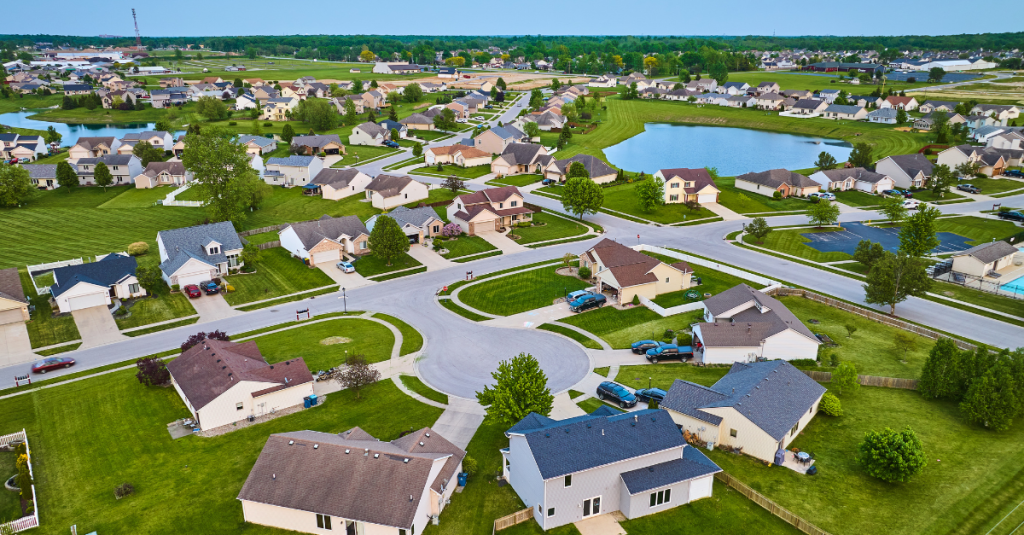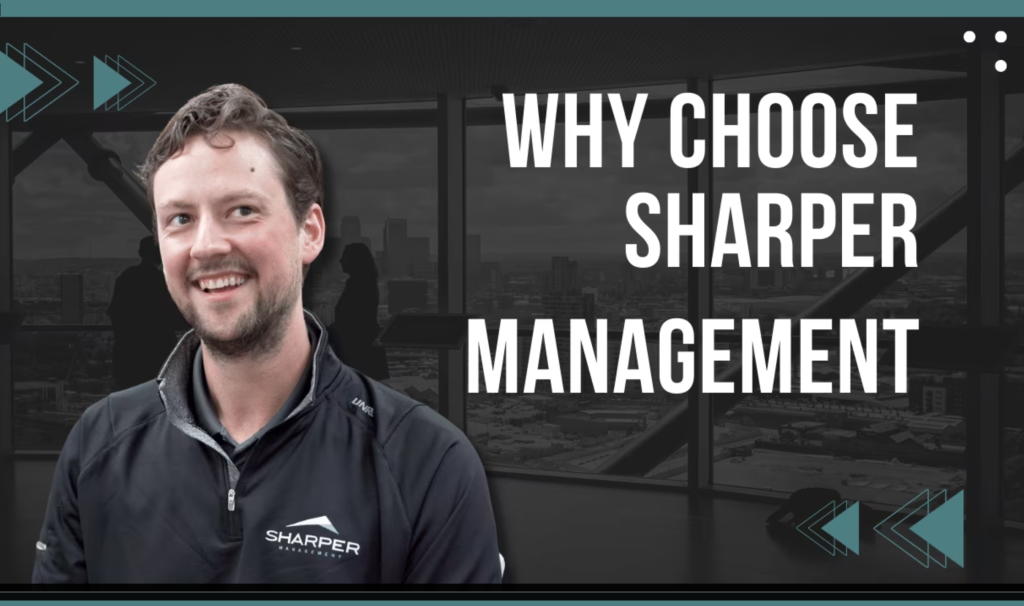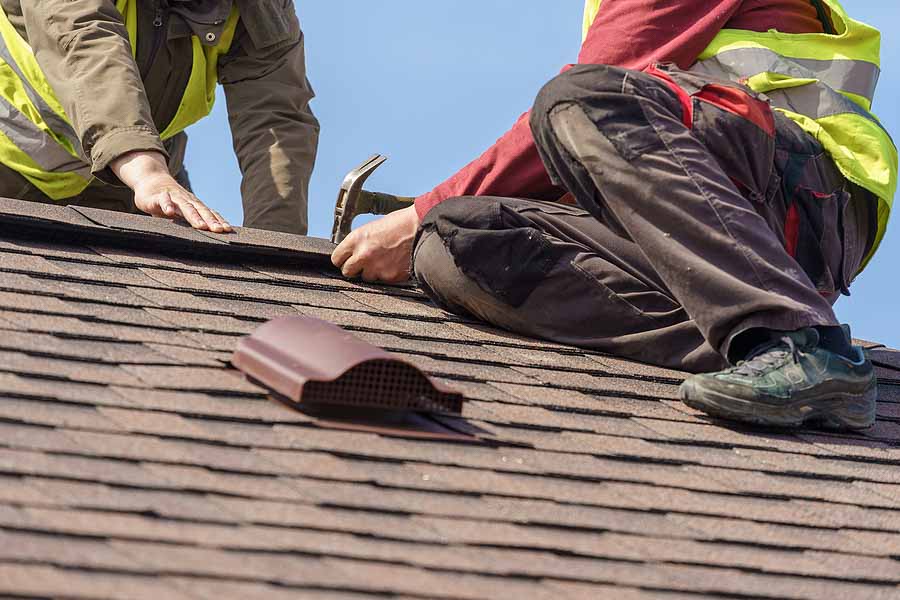The Importance of Loss Assessment Coverage

Insurance in an Association can be confusing. One important distinction in your personal homeowner policy package (commonly called an “HO6” policy) is Loss Assessment Coverage. This coverage is typically different from your “Real Property Coverage.” Real Property Coverage should cover your personal contents, coverage of building construction items like flooring and walls that may NOT be insured by the Association’s Master Policy (which can vary greatly by Association) and, at a bare minimum, coverage of all of those covered components up to the Association’s Master Policy deductible. Loss Assessment Coverage is separate and important to understand. At is core, it is actually quite simple. The Association typically assesses the owner(s) for their share of the Master Policy’s deductible in the event of a loss. The homeowner simply submits that letter, stating they’re being assessed to their HO6 carrier, and their HO6 carrier pays out that deductible assessment. *If the owner doesn’t have this coverage, it is out of their pocket and the Association will move to collect on it just as they would any other regular assessment (“dues”) or special assessment. This is becoming increasingly important because, for the past decade, Association Master Policies have had increasing deductibles – sometimes $25,000 or $50,000 on common losses; and almost all Association policies now have a separate percentage-based deductible for a loss related to wind and/or hail damage. This “wind/hail deductible” is often based on the building value and can range from 2-5%. In the case of a hail storm and loss, homeowners are susceptible to significant assessments to help the Association make up the deductible. Let’s go through three scenarios to help understand how Association deductibles work – and how (and why) Loss Assessments Coverage comes in to play. Scenario 1 – Condo Building Water Leak Unit 200 has a backed-up sink that caused water damage to unit 200 and 100 below. The Association has a $10,000 deductible on the Master Policy that has “all-in” coverage. Damage to both units totals $50,000. The Master Policy is going to cut a check to the Association for $40,000 (less the $10,000 deductible). The Association is going to assess both unit owners $5,000 to make up the $10,000 deductible. The Association is made whole on the claim and the loss/damages remedied. Scenario 2 – Fire to a Townhome Unit The end unit of a townhome complex sustains a fire and the unit is destroyed. The Association has a $25,000 deductible on the Master Policy that has “all-in” coverage, less “betterments and improvements.” Damage to unit is a complete loss. Value for the home is determined to be $200,000 to rebuild the unit back to the original specifications. The Master Policy is going to cut a check to the Association for $175,000 (less the $25,000 deductible). The Association is going to assess that homeowner (since it was the only unit affected) $25,000 to make up the deductible. The Association is made whole to rebuild the unit to the original specifications – the homeowner’s HO6 policy covers the personal contents and any “betterments and improvements” that may have been made by the owner, subject to whatever they had for real property coverage. Scenario 3 – Hailstorm to a Townhome Development Now it gets complicated. A 100-unit townhome development sustains a hailstorm and the roofs are totaled. The Association has a 4% wind/hail deductible on their policy and a total property value at $30,000,000. The loss for getting new roofs will cost $3,000,000. The Master Policy deductible for the hailstorm is $1,200,000 (4% of $30,000,000). That means the Association will receive a check for $1,800,000 (less the $1,200,000 deductible). The Association is going to assess every unit owner $12,000to make up the $1,200,000 deductible. The Association is made whole on the claim and new roofs are installed. In each of these scenarios, the Association is assessing the deductible back to the owners benefiting. Scenario 3 is significant, because the Association has to collect $12,000 from EVERY unit owner. It is a vulnerable place for the Association to be in. And it is a vulnerable place for each homeowner to be in if they don’t have Loss Assessment coverage to cover that assessment. Hopefully this is helpful in understanding how Association deductibles work – but more importantly, hopefully it illustrates just how imperative it is that EVERY owner has adequate Loss Assessment coverage as part of their H06 policy package.
Board Tips: Make Your Meetings Matter

There’s no denying that we live in a culture of meetings. The ease and accessibility of virtual meetings have furthered exasperated the reactionary notion of “let’s get together to talk it through.” As we approach the spring/summer season and the cadence of Board meetings increase, step back and consider two things – Frequency and Productivity. Meeting Frequency – how often are you meeting as an association Board? This will certainly vary. Your Governing Documents may dictate a number of meetings to be held within a calendar year. The size and complexity of your community may require more or less meeting regularity. And situational issues or projects may dictate the volume necessity for a “meeting of the minds.” Consider the notion, however, that the more often you meet, the less productive you may be. Fewer meetings force focus – and therefore motivation to have tangible outcomes and measurable initiatives. Consider evaluating your meeting productivity. If you find that decisions are often times delayed or tabled, if your meetings are more social than business, and certainly if you have a limited number of items on your docket, consider having fewer meetings. See how it goes. The results might surprise you! Productivity = Action List – to ensure that the meeting was, in fact, constructive with measurable outcomes, it is helpful to have a summary identifying assigned tasks. Make a list! As Managers, we refer to this as an “Action Item List.” These can even be incorporated into the Meeting Minutes if it reflects a New Business decision or resolution of the Board. Towards the end of a meeting, it is natural for people to just want to get home. Verbally summarizing and capturing, in writing, all action items is imperative. To make your meetings matter, reconsider frequency and have measurables/outcomes. You’ll find the two go hand-in-hand!
Communication is Key: Forging Stronger Communities through Effective HOA Communication

The Foundation of Community Harmony Effective communication lies at the heart of a thriving Homeowners Association (HOA). In this blog post, we will delve into the critical role of clear and transparent communication within an HOA, exploring why it is the foundation for building stronger, more harmonious communities. The Significance of Clear Communication in HOAs Clear communication is the lifeblood of any community, and HOAs are no exception. Your community wants to feel heard, and they also want to feel valued, which does not happen without communication. If you are implementing changes, those changes need to be effectively communicated to establish trust along with cooperation. When people feel left in the dark when it comes to changes, negativity and anger can arise, which is never good. It is important to show through your communication efforts a sense of unity among residents to create a healthy community environment. The Impact on Community Engagement When communication is conducted effectively, community engagement improves along with transparency. Residents will feel more inclined to join community events, participate in discussions and create a sense of belonging. This can even open the door to new initiatives created when people feel like they are in a positive environment to want to make positive changes themselves. Tips for Successful Communication Strategies in HOAs 1. Regular Newsletters and Updates: Explore the power of regular newsletters or community updates distributed through various channels. Sharing consistent information keeps residents informed about upcoming events, policy changes, and other crucial updates. 2. Digital Platforms for Community Interaction: Communication through social media and online forums is another great communication strategy. These channels provide a space for residents to voice concerns, share ideas, and connect with their neighbors. 3. Town Hall Meetings and Open Forums: Town hall meetings and open forums create a platform for direct communication between the HOA board and residents. By creating regularly scheduled meetings can improve transparency and address concerns in real-time. 4. Utilizing Email and Text Notifications: Email and text notifications for urgent updates or time-sensitive information is a great way to keep your community informed. These channels ensure that residents receive critical information promptly. Handling Conflict Through Effective Communication Conflict is inevitable, but effective communication can be a powerful tool for resolution. By effectively communicating the rules set for your community, you leave less room for confusion or interpretation and more room for transparency and guidelines. There can come times when conflicts arise internally between other community members and by having clearly defined rules prevents these conflicts from escalating. Building a Culture of Transparency As mentioned earlier, transparency is crucial to maintaining a healthy community and should be considered a cultural cornerstone within an HOA. Setting a culture of transparency, openness and honesty builds trust among residents. In turn, by being as transparent with residents as possible promotes a positive community atmosphere. Elevating Community Living Through Clear Communication Having successful communication tactics lead to running a healthy HOA. By being transparent with your community through various forms of communication, you keep your residents happy and informed. It is not just a necessity but a catalyst for building vibrant communities. Take advantage of multiple communication strategies from newsletters to open forums. Continual communication efforts are required to maintain a healthy community. Ready to elevate your HOA management? Contact us today to learn more about Sharper Management’s HOA property management services. Sharper Management is a locally-owned, mid-sized property management company offering a full-suite of premiere services to the Minneapolis-St. Paul seven-county area.
A Look Ahead to 2024 & Back at 2023

2023 has been another great year for Sharper Management! To name just a few successes— Continued growth in welcoming 31-new clients. In doing so, we passed a milestone of 200 associations managed. We also continue a strong retention rate of existing clients. We opened a satellite office in Maple Grove. This summer we rolled out significant upgrades to our software platform and web portal offering – perhaps most notably, a wonderful architectural request tracking and approving feature. This winter we will be integrating new software to help streamline the scheduling and management of our maintenance team. We continue our passion for training. We offered four sessions attended by nearly 200 Board members, representing over 60 different associations This spring we also rolled out our Educational Video Library, featuring 90 videos on dozens of different topics. We had another successful Sharper Scramble Golf Tournament and for the first time ever we topped $10,000 in proceeds, which were donated to the Multiple Myeloma Research Foundation. Sharper was also a feature of our industry’s trade organization (Community Association Institute) annual Vision Awards – receiving nine nominations. See Vision Awards article for details. The achievements of 2023 are many. What we continue to be most proud of, however, is the cohesion and growth of our talented team. We welcomed five new managers this year, each of them a seasoned veteran, uniquely talented, with years of industry experience. We also added positions in our Accounting, Maintenance and Client Care departments. And in an industry plagued by retention issues, we continue to excel in our staff retention. As we look to 2024, we have lots of exciting things on the horizon. See the 2024 Event Calendar article below. We look forward to sharing updates with you through these quarterly newsletters. All of us at Sharper would like to thank you for being a valued client. We thank you for being a part of a great 2023 and look forward to an exciting 2024. And, finally, we wish you and your family a safe, healthy and happy Holiday Season! Legislative Changes Effecting HOAs The 2023 legislative session in Minnesota was an active one. There were a number of significant bills that will, and have, impacted community associations in the state. Some legislative items went into effect this year. See our July newsletter for a detailed listing. As we approach 2024, there is one significant bill that effects some standard day-to-day operations and governance of your association. Violations & Rule Enforcement – in effort to create more uniformity in how rule violations are notified, fines assessed and appeals processed, the Minnesota Common Interest Ownership Act (MCIOA) was amended to create further standards. What it Says – any fine associated with a rule violation has to meet seven specific criteria or it could be challenged in a court. Homeowners are also entitled to a more consistent processes for an appeal and hearing of said fine. Who it Affects – all associations that are currently under MCIOA, which is any association built after June 1, 1994 – and any condominium association regardless of when it was established. What it Means – Any fine and certain assessments must be accompanied by a dated, written notice to the Owner that includes seven specific pieces of information. (1) states the amount and reason for the fine or assessment (2) for fines levied under section 515B.3-102(a)(11) [VIOLATION OF GOVERNING DOCUMENTS], specifies: (i) the violation for which a fine is being levied and the date of the levy; and (ii) the specific section of the declaration, bylaws, rules, or regulations allegedly violated; (3) for assessments levied under section 515B.3-115(g) or 515B.3-1151(g) [DAMAGE TO COMMON ELEMENTS OR A UNIT], identifies: (i) the damage caused; and (ii) the act or omission alleged to have caused the damage; (4) states that all unpaid fines and assessments are liens which, if not satisfied, could lead to foreclosure of the lien against the owner’s unit; (5) describes the unit owner’s right to be heard by the board or a committee appointed by the board; (6) states that if the assessment, fine, late fees, and other allowable charges are not paid, the amount may increase as a result of the imposition of attorney fees and other collection costs; and (7) informs the unit owner that homeownership assistance is available from the Minnesota Homeownership Center When it Goes into Effect – January 1, 2024
Sharper Shines At CAI Vision Awards

Shaper Shines at CAI Vision Awards On Thursday, December 7th, the Community Association Institute-MN Chapter (CAI) hosted their annual Holiday Gala and Vision Awards ceremony. CAI, the international trade organization for community associations and regarded as the national experts in education programs, publications, association governance, advocacy and the accreditation body, holds this annual event to recognize and celebrate managers, business partners and homeowner leaders. Multiple awards were given out for both associations and for individual managers. Nominations are submitted by CAI members and a special voting committee reviews all nomination applications for specific criteria. The awards are a high honor and significant recognition by industry experts, for industry professionals. Sharper is honored to receive the following: Above & Beyond – Josh Fuhreck. Recognizes an individual for substantive achievement in performing tasks and services beyond the typical job description and scope of responsibilities. Josh was the Runner-Up amongst seven nominees. Excellence in Service – Tracy Shaver. Recognizes a manager which goes beyond the call of duty to service the Board and homeowners to make to community a better place. Tracy was the Runner-Up amongst seven nominees. Financial Impact – Michael Miller. Recognizes a manager who positively impacted a community(s) in a significant manner, such as budget management, capital improvement project management, insurance claim navigation, etc. Rookie of the Year – Caleb Robinson. Recognizes a manager with less than two-years of experience, excelling in all aspects of management functions. Caleb was the Runner-Up amongst seven nominees. Advanced Manager of the Year – Kim Schlauderhoff. Recognizes a manager with over seven-years of experience who excelled in all aspects of management functions. Kim was the winner amongst a handful of very qualified candidates. Management Company Support Staff – Anton Graf. Recognizes an individual that supports the operations of a management company on an administrative, financial, etc. level. Anton was the Runner-Up amongst nine other nominees. Association of the Year – This award recognizes an association Board of Directors who members clearly understand their roles and fiduciary responsibilities putting the association’s interests ahead of and above all personal agendas. (Large: 100+ Homes) – Ridgewood Condominium Association – Manager Tom Parsons. Ridgewood tied for Runner-Up in the category. (Small: Less than 100 Homes) – Henley Condominium Association – Manager Kimberly DuPont. The Henley of Edina took home the Award! Outstanding Community – Bearpath Homeowners Association (Manager Dave Garten). This award recognizes an association the values community building. Bearpath was the Runner-Up for the award. In this industry event, which this year had an attendance of over 550 people, Sharper has been fortunate to have a long-list of winners. In 2021 we took home five of eight nominations. 2022 we took home four of nine nominations. Now in 2023 we’re honored with two winners and six Runner-Ups awards. Congratulations to all of the nominees and winners! It was a beautiful night for the industry – and an exciting night for Sharper.
The Ultimate Guide to Successful HOA Management

Homeowners Associations (HOAs) play a crucial role in fostering vibrant and harmonious communities. Successful HOA management requires a delicate balance of effective communication, fair rule enforcement, and robust community engagement. In this blog, we’ll explore the key components of successful HOA management, offering valuable insights for your neighborhood along with making your community feel taken care of. Communication is Key in Successful HOA Management Effective communication is the cornerstone of successful HOA management. Implementing programs such newsletters, community forums & digital platform announcements can help foster an open dialogue in your HOA community. These programs can help improve relationships throughout your community while also keeping them informed & engaged. Rule Enforcement with Fairness and Transparency Fairness and transparency should be at the forefront when exploring rule enforcement. Having clearly defined rules allows for consistent enforcement throughout your community. Creating a balanced approach will help your community respect these guidelines along with a more positive environment. Community Engagement: Building Stronger Bonds Engaging your community helps foster a positive relationship with HOAs. Think about implementing programs such as social events and volunteer opportunities to create a stronger bond amongst your residents. Having a connected community leads to higher satisfaction and quality of life for everyone. Leveraging Technology for Efficient HOA Management Incorporating technology is essential for efficient HOA management. Uncover how digital tools can streamline communication, facilitate rule enforcement, and enhance community engagement. From dedicated HOA management software to online portals, there are multiple tech solutions that can make successful management a reality. Strategic HOA Management Planning for Lasting Success Successful HOA management involves proactive planning. Planning for things such as maintenance, community needs and financial planning can help plan for future success. By creating a well thought out strategy, you can foster an environment for a thriving neighborhood. Conclusion As you navigate the intricate landscape of HOA management, remember that success is a journey, not a destination. By prioritizing effective communication, fair rule enforcement, community engagement, and leveraging technology, you pave the way for a healthy and happy neighborhood. Implementing these strategies can lead to successful community living. — Ready to elevate your HOA management? Contact us today to learn more about Sharper Management’s HOA property management services. Sharper Management is a locally-owned, mid-sized property management company offering a full-suite of premiere services to the Minneapolis-St. Paul seven-county area. Topic post by following us on LinkedIn at https://www.linkedin.com/company/880327.
Sharper Management – Why Choose Sharper Video

The video for HOA Members Are you an HOA board member looking for a new property manager, or in an association that needs just a little bit better care? If so, perfect! I’m here to help. I’m Grant Peterson, the Director of Client Care here at Sharper Management, and I’m here to tell you why you should choose Sharper as your property manager. At Sharper, we’re large enough to handle any problem in a specialized fashion, but small enough to have great customer service. Our support structure is a large reason that we’re the best at what we do. When you call with an issue, you’ll talk directly to one of our client care specialists, not a robotic answering machine. Depending on the issue, our client care specialist will coordinate with different Sharper staff members to get it resolved. If the issue is related to something breaking down, then maintenance will be called to take care of it. Additionally, accounting will take care of any questions or issues involving billing. Similarly, resale is on hand to answer questions about selling your property within your HOA. Beyond that, we have a partnership with some of the highest quality vendors in the industry. Speaking of quality service, we are very proud of our best Industry member portals. They are set up as an easy, online, one -stop shop for all your needs. If you’d like more information, reach out to Sharper Management at 952 -224 -4777 today. Want more information about sharper? Visit the Why Choose Us Page here: https://sharpermanagement.com/why-choose-us/
Electric Vehicle Charging Capabilities

Ready or not, the future is here. One of the most complex situations every HOA will face, if they’ve not already, is how to handle the quickly emerging demand for electric vehicle (EV) charging capabilities. Per the US Department of Energy, between 2015-2020, the number of EV charging stations installed throughout the country doubled. Between 2021 and 2022, the number of charging stations has doubled again. As electric vehicles become more accessible and affordable, demand has and will continue to increase. The issue associations are currently facing is how they can accommodate residents who make the switch to electric vehicles. Accommodating electric vehicles presents different challenges at each unique Association: Will the underground parking garage of a condo building offer charging stations in each garage stall? Will the association install a common area station somewhere for residents to share? Does the detached garage in the townhome association have an adequate electricity supply to the structure to handle 240-volt charging stations should a homeowner want to install one? Is the transformer to the townhome metered separately, and does it have the bandwidth to allow owners to install a station in their private garage? How will costs be handled? Sharper is excited to announce a recent partnership with the experts at HOAMEV to assist HOAs with answering these questions. HOAMEV is equipped to offer installation, setup, and electrical service upgrades and, perhaps most importantly, are experts in interpreting and working with association governing documents. The first step is to evaluate and audit your association’s existing electrical infrastructure and electricity usage. This electrical audit provides the information that HOAMEV needs to develop a plan to accommodate for the inevitability of being ready for electric vehicle charging capabilities at your association. The cost for the electrical audit is roughly $1,000 per association. The audit takes place over the course of a 30-day period, is unintrusive, and will not affect or interrupt electrical service. Your homeowners likely won’t even know the audit is taking place. If you are interested in exploring this opportunity, speak to your Community Manager and they can connect you with a HOAMEV representative. It is important that associations act soon. While the electrical audits can be conducted now, supplies for installing electric vehicle charging capabilities are currently limited, and installers are already booked into the fall of 2023. If you haven’t started the process yet, you are already behind.
Association Funds: Operating vs Reserve

Since most associations are on a calendar fiscal year, your Board of Directors and Management will soon start working hard to establish your 2023 Operating Budget. This budget, essentially, sets your “dues” – so we thought it would be a timely opportunity to explain the difference between the “operating budget” and funds VS the “replacement reserve” schedule and funds. Operating Budget Each association varies, of course, but an overwhelming majority treats operating and reserve (or capital) funds differently. Your association works within an operating budget to pay for your necessities and recognized amenities. These items are set by your Governing Documents. Common examples include lawn care, landscaping, snow removal, insurance, management services, repairs and maintenance, association covered utilities, amenity costs for pools or other recreation, etc. These are the costs to run your association on a day-to-day basis. This budget makes up your monthly/quarterly/annual assessment – commonly called “dues.” Little known fact – for most associations, did you know that your monthly dues payment is technically called an annual assessment? The common practice is to break it up into 12 equal monthly installments and call them “dues.” But, for most associations, the adopted operating budget and your share of those expenses (be it by ownership percentage in a condo or your equally divided share of the planned community) is legally recognized as a yearly assessment. Reserve Fund The association’s reserve, or capital, fund is essentially the savings account to pay for large replacement projects such as re-roofing, re-siding, concrete and asphalt replacement, etc. Most associations work off of a professionally developed Reserve Study that lays out the plan for which components should be replaced which year, and a funding plan to pay for those replacements. So, how do these funds work together? The reserve fund is contributed to via an expense listed in the operating budget. If the Reserve Study says in 2023 the association should contribute $120,000 to the Reserve Fund, typically each month the association will take $10,000 generated from your dues revenue and deposit into the Reserve Fund account. This is a set line item in the operating budget. It’s a lot like a savings and checking account. You deposit your paycheck into your checking account, which you use to pay your regular bills. It’s your “operating account.” You might also plan an amount each month you send to your savings or retirement account to pay for those big expenses down the road. It’s your “reserve account.” Hopefully this helps to explain two very different funds your association is working with!
Storm Damage Restoration & Contractors

While summer is coming to an end and fall is approaching, storms aren’t over. The best time to form a plan to repair storm damage is before the storm hits. Having a relationship with a roofing contractor prior to any damage will actually speed up the process and ensure that your damages are repaired, even those that aren’t visible from the ground. Research roofing companies in the area to make sure you’re hiring a company who has experience, preferably with HOAs. Ask to see their licensing, prior work, and referrals from past clients. Once you’ve selected your contractor, schedule a storm inspection to form that relationship and to be aware of the current state of your property. Many contractors offer a monitoring service so that when a storm affects the area, they’ll come out to assess the buildings or homes for damage. This also means that repairs will get done quicker than if you were to contact a company after damages have occurred. Timely repairs can also save you money from further issues like water damage. If water enters homes and buildings and isn’t repaired before the next time it rains, you’ll be needing further services like mold inspections and remediation. Not sure who to hire? Check out our preferred vendor Atlas Restoration & Construction: https://atlasmn.com/
